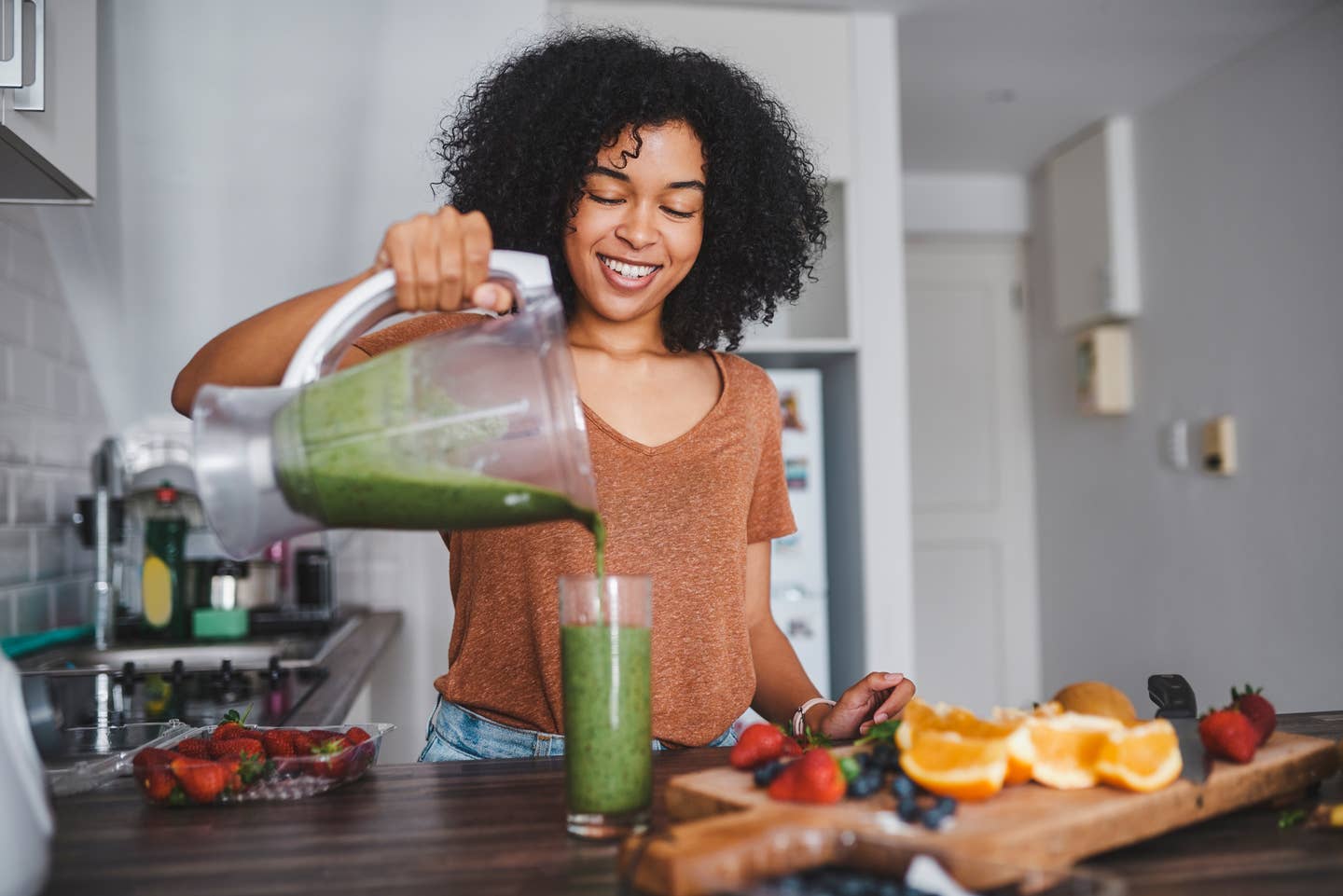
New Study: You Don’t Need a High Protein Diet to Build Muscle
In the world of fitness and bodybuilding, one macronutrient reigns supreme—protein. It doesn’t come as a surprise, because proteins are the building blocks of life, and of course, muscle. Every single cell in our body contains protein, and it’s needed to continue to repair cells and create new ones.
When we exercise, our muscles form tiny tears which help the muscle grow stronger as it heals itself. Due to their repairing nature, muscles need protein to come in to assist with mending fibers, which may help speed the process and impact recovery time. Many fitness enthusiasts that focus on weight lifting typically consume higher protein because they want to add more muscle mass.
The current Recommended Dietary Allowance (RDA) for protein sits at 0.8 grams per kilogram of body weight (or roughly 0.4 grams per pound of body weight). This is considered the “minimum” and can vary depending on lifestyle factors, age, and sex. The question then arises, is more protein better or unnecessary when it comes to muscle strength and gain?
New Research Shows That You Don't Need a High Protein Diet
A recent 2021 randomized control trial published in the American Journal of Physiology-Endocrinology and Metabolism had 50 overweight middle-aged men and women start resistance training for 10 weeks while being assigned either moderate protein intake (0.8 - 1.0 g/kg a day) or high protein intake (1.6 - 1.8 g/kg a day). The goal was to determine if high protein intake would increase resistance training-induced changes in muscle strength and body composition compared to moderate protein intake.
Participants in the moderate intake group ate three ounces of beef (16 grams of protein) immediately after exercise while the high protein group ate six ounces (32 grams of protein). In addition to that, participants were provided beef isolate protein powder to drink one to two hours before bed. Those in the moderate protein group drank 15 grams worth of protein and the high group consumed 30 grams. When it came to exercise, all participants did whole-body resistance training 3 days per week.
After the 10 weeks were up, participants had their muscle strength, performance, and body composition compared to their baselines (pre-exercise and protein). The results found that muscle strength and performance were not different between moderate and high protein groups. Total body mass for those in the moderate protein group increased by 1.3 kg and by 1.5 kg in the high protein group, which isn’t a significant difference.
To sum things up, high protein intake is not linked to increased strength and bigger muscles. With this study, there are some cautions with researchers writing, “our results should be cautiously interpreted for situations of protein intake below current ‘aging’ recommendations of 1.2 g/kg/day or in the context of plant-based eating patterns.”
When you take in more protein than your body needs, it gets stored as fat, just as other excess calories from other macros, and you excrete the unneeded amino acids in urine.
Choose Plant-Based Protein to Boost Muscle Mass
It’s not uncommon to hear the word “protein” and instantly think of animal sources. When vegan eating became increasingly popular in the early 2010s, the question of “where do you get your protein?!” tended to make its rounds. Nowadays, with more individuals following a plant-based diet, it’s no shock that there are many protein-rich plant sources to easily meet your needs.
In fact, consuming plant-based foods may be the key to increasing muscle function. Another recent study published in The Journal of Nutrition found that dietary nitrate intake from vegetables may be effective in boosting lower-limb muscle strength and physical function in both men and women. Those that consumed higher amounts of nitrate from veggies (around 91 mg/day) had 2.6 kg stronger knee extension strength and a 0.24-second faster 8-ft-timed-up-and-go (a performance-based measure of functional mobility).
Those that are interested in swapping out animal protein for plant proteins may not only increase muscle function but add a few years onto their life as well. A 2016 study published in JAMA Internal Medicine determined that animal protein was associated with mortality while plant protein was inversely related (meaning the higher the plant protein intake, the lower your risk of mortality). Cardiovascular disease was one of the main causes of mortality in those that consumed animal proteins, likely due to other components such as sodium and fat. On the other hand, plant-based protein lowered blood pressure, reduced LDL (“bad”) cholesterol levels, improved insulin sensitivity, and lowered the incidence of cardiovascular disease and type 2 diabetes.
Even the slightest adjustment from protein to plant protein can be beneficial. The same study found that a 3 percent energy from plant protein in place of eggs was associated with a decrease in cancer mortality by 21 percent. To put that into calories, a 3 percent energy substitution would be 60 calories if you eat a 2,000 calorie diet.
Takeaway tip: You don't need a high protein diet to build muscle, but if you want to be healthy, choose plant-based protein and only eat the recommended daily amount.
Click here to check out the best sources of protein on a plant-based diet.
Top 10 Sources of Plant-Based Protein According to a Nutritionist
1. Seitan
Protein: 21 grams in ⅓ cup (1 ounce) Seitan isn’t as popular as other proteins, but it should be! Made from wheat gluten, its texture resembles ground meat. It’s often used in pre-made veggie burgers or meatless nuggets. Seitan has a savory taste, like mushrooms or chicken, so it works well in dishes that call for an umami flavor. With a hearty texture, seitan can be the star of practically any vegan main dish. Add it to stir-fries, sandwiches, burritos, burgers, or stews. Like tofu, seitan will take on the flavor of any marinade or sauce.
2. Tempeh
Protein: 16 grams in 3 ounces If you like a protein with a bit of bite, add tempeh to your list. Made from fermented soybeans, tempeh has a slightly nutty flavor and is pressed into a block. Most varieties include some sort of grains, such as barley or millet. Not only is tempeh a plant-based source of protein, but the fermentation process also creates good-for-your-gut probiotics. You can cut tempeh right off the block and use it as the base for a sandwich or pan-fry it with some sauce. Or, crumble, heat, and make it the star of your next taco night.
3. Lentils
Protein: 13 grams in ½ cup cooked Lentils come in multiple varieties--red, yellow, green, brown, black. Regardless of the type lentils are small but mighty nutritional powerhouses. They pack a good amount of protein as well as iron, folate, and fiber. When cooked, brown lentils retain their texture and can be the base for a grain bowl or make a hearty substitute for ground meat in meatballs, lasagna, tacos or Bolognese. Red lentils are a bit softer and make a nice add-in for a hearty soup, chili, or stew.
4. Hemp Seeds
Protein: 10 grams in 3 tablespoons Hemp seeds are a tender and nutty seed, derived from the hemp plant. They contain good amounts of omega-3s, iron, folate, magnesium, phosphorus, and manganese. They are also a solid source of both soluble and insoluble fiber, which helps to keep your digestive tract healthy and humming. Because they pack a double whammy of protein and healthy fats, hemp seeds can help satisfy hunger, preventing those embarrassing stomach growls as you slog your way to your lunch break. Add them to your morning smoothie or sprinkle them on top of yogurt, oatmeal, or even a salad.
5. Tofu
Protein: 9 grams in 3 ounces (⅕ of a block) Made from coagulated soybeans, tofu is the most popular plant-based protein. Soy is one of the only meatless "complete" proteins, meaning that it contains all of the essential amino acids that the body can’t make but needs for muscle and immune function. With 15% of your daily calcium needs, tofu is also a good replacement for dairy.
6. Edamame
Protein: 9 grams of protein in ½ cup This sushi appetizer is a nutrient powerhouse, so eat it anytime. Edamame is really just another name for soybeans in their pods. Let’s list off some stats--a small ½-cup serving of edamame has 9 grams of protein, 15% of your daily vitamin C, 10% of your daily iron and 16% of your daily fiber. Keep a bag of edamame in your freezer to serve as a fun-to-eat side dish or opt for the shelled variety to toss into salads or a grain bowl.
7. Quinoa
Protein: 8 grams per cup (cooked) Quinoa is an ancient grain and since it's gluten-free a great choice for anyone avoiding gluten. Add it to your burger recipe to create filling texture, or instead of meat in your taco or burrito. Quinoa is among the healthiest foods on the planet, delivering phytonutrients that have anti-inflammatory qualities, so keep it in your pantry for any meal that needs a filling grain. Just remember to soak it and rinse before cooking to get rid of any bitter taste.
8. Black Beans
Protein: 7 grams in ½ cup (canned) Eating beans on the regular might as well be a prerequisite for a plant-based diet. Not only are canned black beans inexpensive, but they also contribute 10% of your daily iron and 25% of your daily fiber to your diet. For less than $1 a can, beans can be the star of tacos, quesadillas, salads, soups, burgers, or dips.
9. Amaranth
Protein: 6 grams in ⅔ cup (cooked) Chances are you’ve never cooked amaranth. But you should, since this tiny, gluten- free grain is packed with almost 30% of your daily fiber and 20% of your daily iron. Cook it like a traditional grain to yield a soft, porridge-like texture. Many people add amaranth to other a hot breakfast cereal mixture, like oats and quinoa. It also pops like popcorn. Toss it in a pot with some oil and wait for it to pop up into a nutritious snack.
10. Peas
Protein: 5 grams in ⅔ cup If peas were one of your most hated veggies as a kid, it’s time to give them another chance. These green beans are a great low-calorie protein to keep in your freezer. Sure, they don’t always taste great when steamed or microwaved (who wants to eat mushy, overcooked peas?), but they do blend well into a yummy puree that can be slathered on toast. To amp up the flavor, add some lemon juice or mint to your mix before you blend.
More From The Beet






